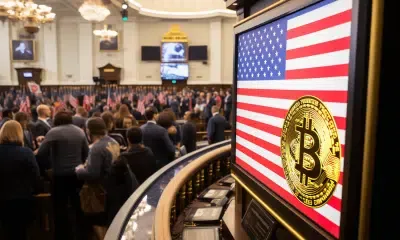
Meme Coins: Decoding the Internet’s Wild Crypto Ride
Meme coins, those often wild and unpredictable players in the crypto game, pop up from internet jokes, viral moments, and tight-knit online groups. They’re not like Bitcoin, which aimed to be digital cash, or utility tokens that unlock specific crypto services. Instead, meme coins mostly get their buzz—and their price tags—from how much people are talking about them, what’s happening on social media, and folks betting on their rise. Think of them as where internet fun smashes into financial gambles.
But how do meme coins work, really? Let’s break down what sets them apart from other kinds of digital money.
What Really Splits Them from Other Digital Cash
A few key things make meme coins a different beast:
- How They Start and Why: Usually, a meme coin kicks off from an internet gag or a running joke. The idea is more about laughs or making a point than fixing a real-world issue. Your standard cryptos try to solve tech or money problems, and utility tokens are all about what they can do in their own system.
- What Gives Them Value (Or Not): The price of a meme coin rides a rollercoaster powered by community excitement, social media vibes, and pure speculation, often without much solid value underneath. In a February 2025 bulletin, folks at the U.S. Securities and Exchange Commission (SEC) mentioned that meme coins usually aren’t seen as securities. People tend to buy them for fun or because they’re part of a trend, kind of like collecting baseball cards, where what people are willing to pay sets the price. This isn’t how established cryptos, valued for their tech and how many people use them, or utility tokens, valued for what they do in their specific project, work.
- Use Cases and Practicality: Most meme coins don’t do much in the real world beyond being traded or used for online tips. Some newer ones are trying to add things like digital collectibles (NFTs) or games, though.
- Crazy Swings and High Stakes: Expect wild price jumps with meme coins. Their values can shoot up and crash down fast, all based on what’s hot online at the moment.
- Coin Economics (Tokenomics): You’ll often see meme coins with massive, sometimes endless, supplies of tokens, which keeps the price of each individual coin low. Sometimes they try for “fair launches” so everyone gets a shot, but big “whale” investors holding lots of coins can still be an issue. “Burning” tokens, or sending them to an unusable address, is a common trick to try and make them seem scarcer.
- All About the Crowd: These digital coins absolutely need their enthusiastic online fanbases to shout about them and keep people wanting them.
The Tech Side: Not Just Jokes, They’re Built on Real Blockchains
Even with their silly faces, meme coins use serious blockchain tech and standard smart contract blueprints. They usually get launched on existing blockchains that can handle smart contracts, which makes it quick to whip one up.
Popular Blockchain Hangouts:
- Ethereum (ETH): For a long time, Ethereum was the king for making new tokens with its ERC-20 rulebook, and it still hosts a ton of meme coins. Its higher gas fees (transaction costs) can be a pain for some, though.
- BNB Smart Chain (BSC): People like BSC because it’s cheaper and quicker. It uses the BEP-20 token type, which plays nice with Ethereum’s ERC-20.
- Solana (SOL): Solana quickly became a hotspot for new meme coins thanks to its super-fast transactions and tiny fees, using its SPL token standard. It’s so easy to make tokens on Solana, with tools like Pump.fun, that there’s been an explosion of Solana meme coins.
- Other Spots: You’ll find meme coins on other chains too, like Polygon, Base, Arbitrum, and TRON. Creators pick them based on cost, speed, and whether there’s already a crowd there. A look into new tokens on the Base network, many being meme coins, showed a big chunk had security problems.
Smart Contract Rules: These are the agreed-upon instructions that let tokens work together and decide what they can do. ERC-20 (for Ethereum), BEP-20 (for BNB Smart Chain), and SPL (for Solana) are the ones you see most.
Making a basic meme coin isn’t rocket science anymore, with plenty of “meme coin generator” websites and launchpads out there. Still, handling the money (liquidity) on decentralized exchanges (DEXs) and getting security checks (audits) are super important techy bits.
Tokenomics: The Art of Making Hype Pay
How meme coins manage their supply and distribution is all over the place, but it’s usually about getting the community revved up and going viral.
- How Many Coins?: Lots of them start with truly giant numbers of tokens (Shiba Inu, for example, kicked off with a quadrillion) to keep the price per coin tiny. Some, like Dogecoin, keep making new coins forever, which is an inflationary setup. On the flip side, many use “token burning”—destroying coins—to shrink the supply and, in theory, make the remaining ones rarer.
- Getting Them Out There:
- Fair Launch: The goal here is to spread the first batch of coins out fairly, often through DEXs without selling them to big investors beforehand. Places like Pump.fun help make these happen.
- Presale: Some projects sell a slice of their tokens to early backers to get cash for building and advertising.
- Airdrops: Giving away free tokens to create excitement and draw in a crowd.
- Automatic Tricks: Smart contracts often bake in things like:
- Transaction Fees: Small charges on buys or sells that can go into funding liquidity pools, burning more tokens, giving rewards back to holders (“reflections”), or paying for marketing and development.
The Life of a Meme Coin: From Internet Joke to Who Knows What
- Birth and Blast-Off: It all starts with an online laugh, and then they figure out the token details (often, a zillion coins). Easy creation on platforms like Solana means new ones are popping up constantly.
- Rallying the Troops and Building Buzz: Social media sites like X (formerly Twitter), Reddit, Telegram, Discord, and TikTok are where the magic (or madness) happens. Influencers and catchy stories try to make the coin a viral hit. FOMO (fear of missing out) and people just following the crowd pull in early buyers.
- Price Rollercoaster: All that hype can send prices soaring, but they often crash just as fast when early birds cash out or people lose interest. Big investors (“whales”) messing with the market can make things even shakier.
- Where They End Up:
- Sticking Around (The Unicorns): A few, like Dogecoin and Shiba Inu, manage this by building super strong communities and sometimes even adding new features or projects.
- Fading Away: Many just fizzle out, with hardly anyone trading them.
- Scams or Bust (Way Too Common): The sad truth is most just die. “Rug pulls,” where the creators disappear with everyone’s money, happen a lot. Reports indicate many new tokens, especially on networks like Base, are outright scams or have serious security weak spots.
The Hype Machine: Social Media and Paid Shills
Social media isn’t just for ads; it’s the absolute fuel for meme coins. Platforms like X, Reddit, Telegram, and TikTok are ground zero for whipping up excitement, building groups of fans, and even figuring out what a coin is worth. Influencers, even with questions about honesty and rules hanging over them, can make a coin famous overnight and kickstart that FOMO feeling. The story behind a meme coin, its whole vibe, gets spun and spread through these channels, and that directly sways how much people think it’s worth.
Why We Click “Buy”: The Weird Pull of Meme Coins
Powerful gut feelings and mental quirks drive people to want meme coins:
- FOMO (Fear Of Missing Out): Seeing others get rich quick makes people jump in without thinking.
- Following the Herd: It’s human nature to do what a big group is doing.
- Investing as a Game: Trading meme coins can feel less like serious finance and more like a thrilling game.
- Chasing Lottery Wins (“Moonshots”): The dream of tiny investments turning into massive payouts is a huge draw for gamblers.
- Stories and Social Sway: Jokes, being part of a cultural moment, and influencer shout-outs all play a big part.
Walking Through the Danger Zone: Risks and How to Be Smart
Putting money into meme coins is seriously risky:
- Wild Price Swings: Values can tank just as fast as they skyrocket.
- No Real Backing: Most aren’t tied to anything useful in the real world.
- Hard to Sell (Illiquidity): You might struggle to sell, especially smaller coins, without tanking the price.
- Market Rigging: “Pump-and-dump” schemes, where scammers hype a coin then sell off, are everywhere.
- Scams Galore: Rug pulls and “honeypots” (where the smart contract stops you from selling) are all too frequent.
- Shaky Code (Smart Contract Flaws): Many projects don’t get their code checked, leaving them open to hackers. Digging into platforms like Base showed that about 1 out of every 6 new meme coins is a scam, and a whopping 91% have security issues.
Seriously, Do Your Own Research (DYOR):
- Check Out Whitepapers and Who’s Behind It: Look for clear info and people who know what they’re doing.
- Pick Apart the Tokenomics: Get a grip on the coin supply, how it’s given out, and if it’s easy to manipulate.
- See if the Community is Real: Try to tell if the buzz is genuine or just a bunch of bots and paid hype.
- Demand Smart Contract Audits: Stick to projects that have been checked by well-known security firms.
- Look for Locked Liquidity: Make sure the project’s trading funds are locked up so the creators can’t just run off with them.
- Use the Tools: Blockchain explorers (like Etherscan or Solscan), DEX trackers (like DEXTools), and token checkers (like Token Sniffer) can give you good clues.
What the Cops Think: The Rules are Still Being Written
Regulators around the world are trying to figure out what to do with meme coins:
- United States: The SEC’s Division of Corporation Finance let it be known on February 27, 2025, that they don’t usually see meme coins as securities. This means if you buy them, U.S. federal securities laws might not protect you from scams like pump-and-dumps. But, this doesn’t stop other groups, like the CFTC or FTC, from going after fraud.
- European Union: The Markets in Crypto-Assets (MiCA) law, set to be fully in place through 2025, will create a big rulebook for digital money, including meme coins. The focus is on being clear and protecting investors. ESMA (European Securities and Markets Authority) has been putting out advice, like how to tell if a crypto is a financial instrument.
- United Kingdom: The Financial Conduct Authority (FCA) is really cracking down on how crypto is advertised, warning that even social media memes can fall under their rules. The FCA has already gone after illegal meme coin promotions and is building a bigger set of rules, including an A&D Regime and MARC (Market Abuse Regime for Cryptoassets). As of January 15, 2025, Google Ads in the UK now requires FCA registration if you want to advertise crypto exchange stuff.
How Big is This Craze? And What’s the Ripple Effect?
The whole meme coin scene is worth a lot of money. By early 2025, some thought it could hit $140 billion, way up from $20 billion in early 2024. Coins like Dogecoin, Shiba Inu, and Pepe are still holding onto some hefty valuations. Even though it’s a small slice of the total crypto pie, this part of the market packs a serious punch when it explodes. Solana has really become the go-to place for launching meme coins.
What’s Next: Just a Fad, or Something More?
Nobody knows for sure what will happen with meme coins. A lot of them will probably just be short-lived gambles. But some might stick around by:
- Actually Doing Something Useful: Connecting with decentralized finance (DeFi), NFTs, gaming finance (GameFi), and the metaverse. Projects like Shiba Inu (with its ShibaSwap exchange and metaverse ideas) and Floki Inu (with an NFT shop and a game) are trying to do this.
- Building Real Communities and DAOs: If they can get genuine fan support and let the community make decisions (decentralized autonomous organizations), they might last longer.
- Being a First Step: Because they’re easy to get into, they can be a way for new people to discover the wider world of crypto, but it’s crucial they learn about the dangers.
The Green Question: Mining vs. Staking
Whether meme coins are bad for the planet depends on how they’re made:
- Proof-of-Work (PoW): Coins like Dogecoin use a lot of electricity for mining.
- Proof-of-Stake (PoS): When Ethereum switched to PoS in 2022, it cut its energy use by a massive amount (around 99.95%). This was good news for Ethereum-based meme coins like Shiba Inu and Pepe. PoS is usually seen as the greener choice.
Wrapping It Up: Where Internet Jokes Meet Wall Street Bets
Meme coins are a wild, fascinating, and sometimes scary corner of the crypto world. They’re powered by internet culture, people power, and the thrill of a good bet, and they definitely make you rethink what “value” even means. They’re easy to jump into, which can attract newcomers, but the whole scene is full of crazy price swings and huge risks from scams and manipulation. As governments try to catch up with rules and some projects try to become more than just a joke, meme coins are still a fast-moving, closely watched area where online fads and serious money make for an unpredictable, but powerful, mix.




